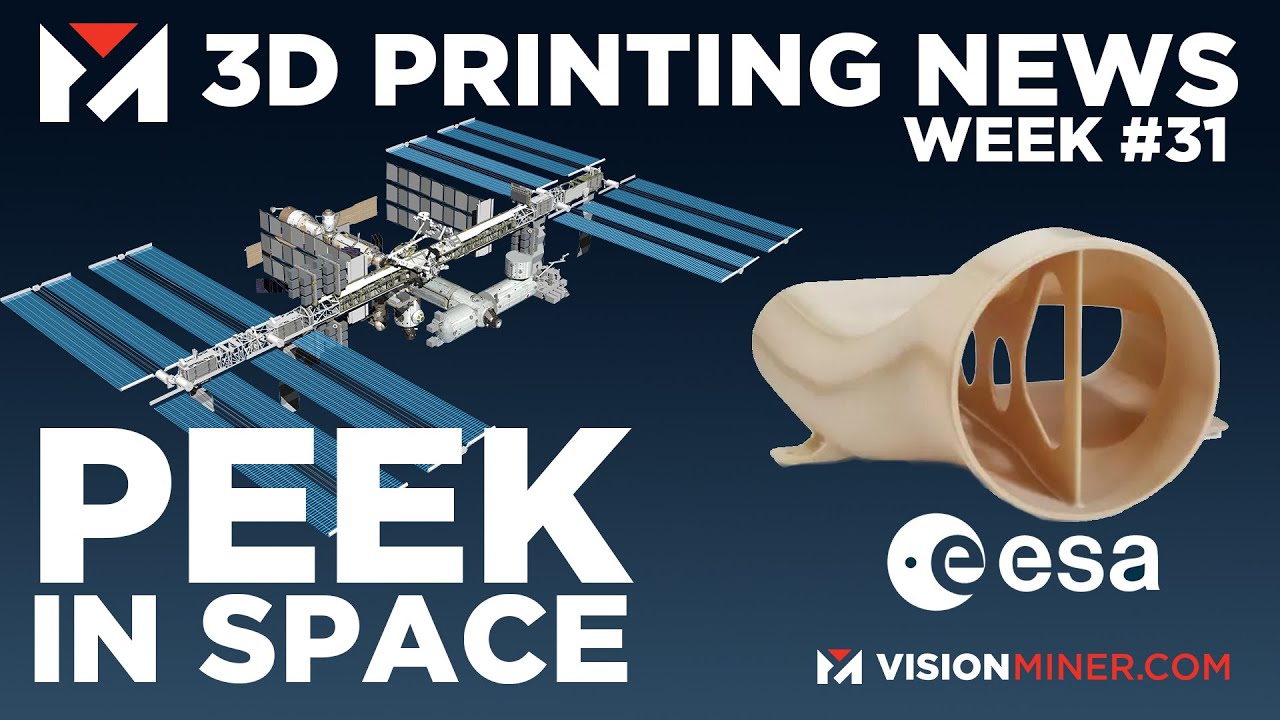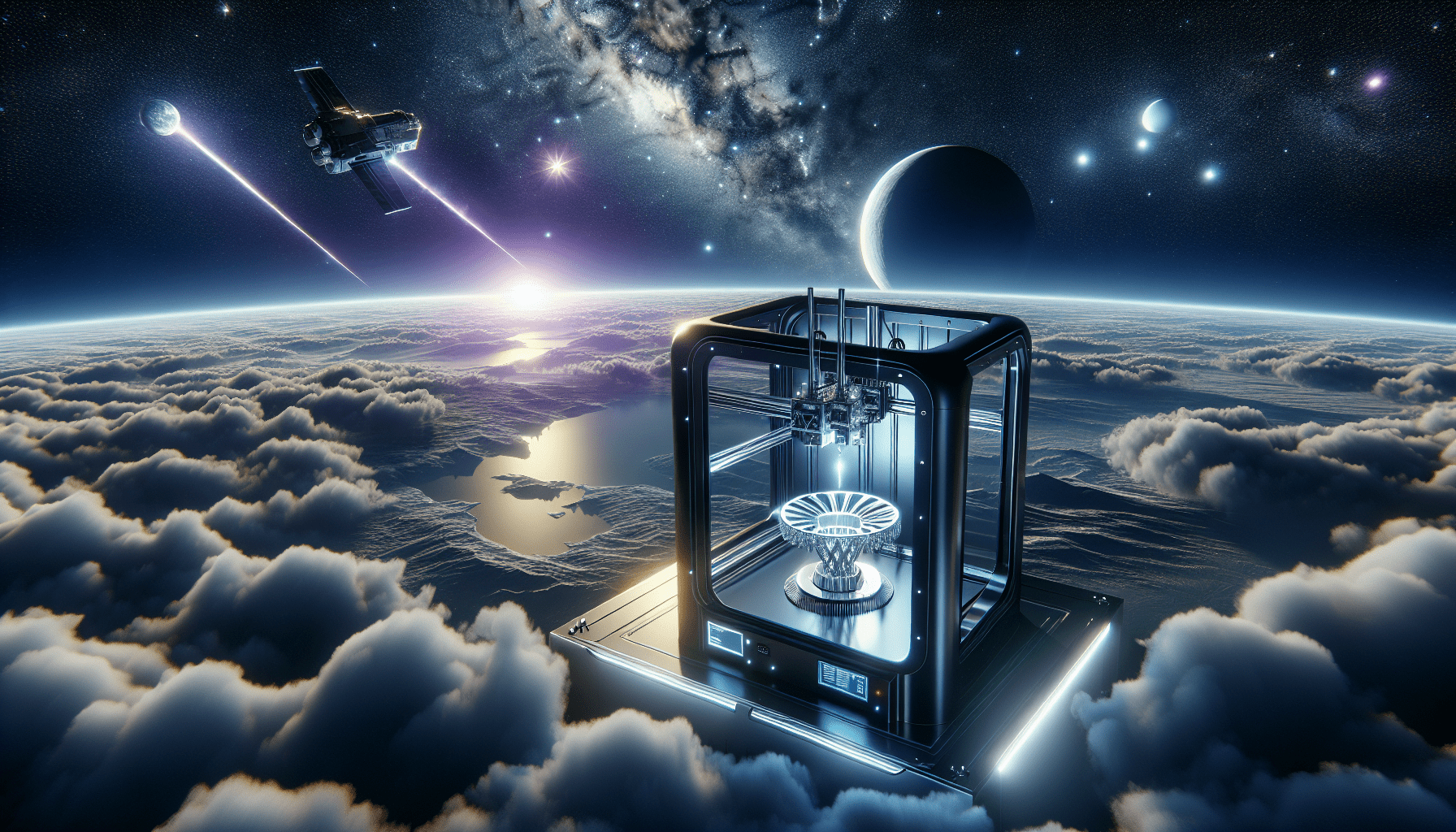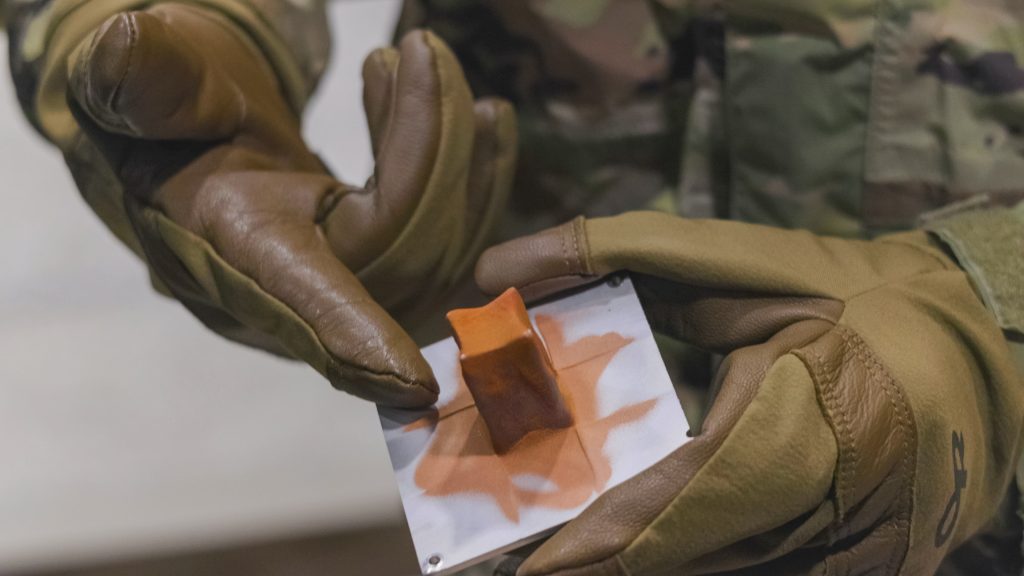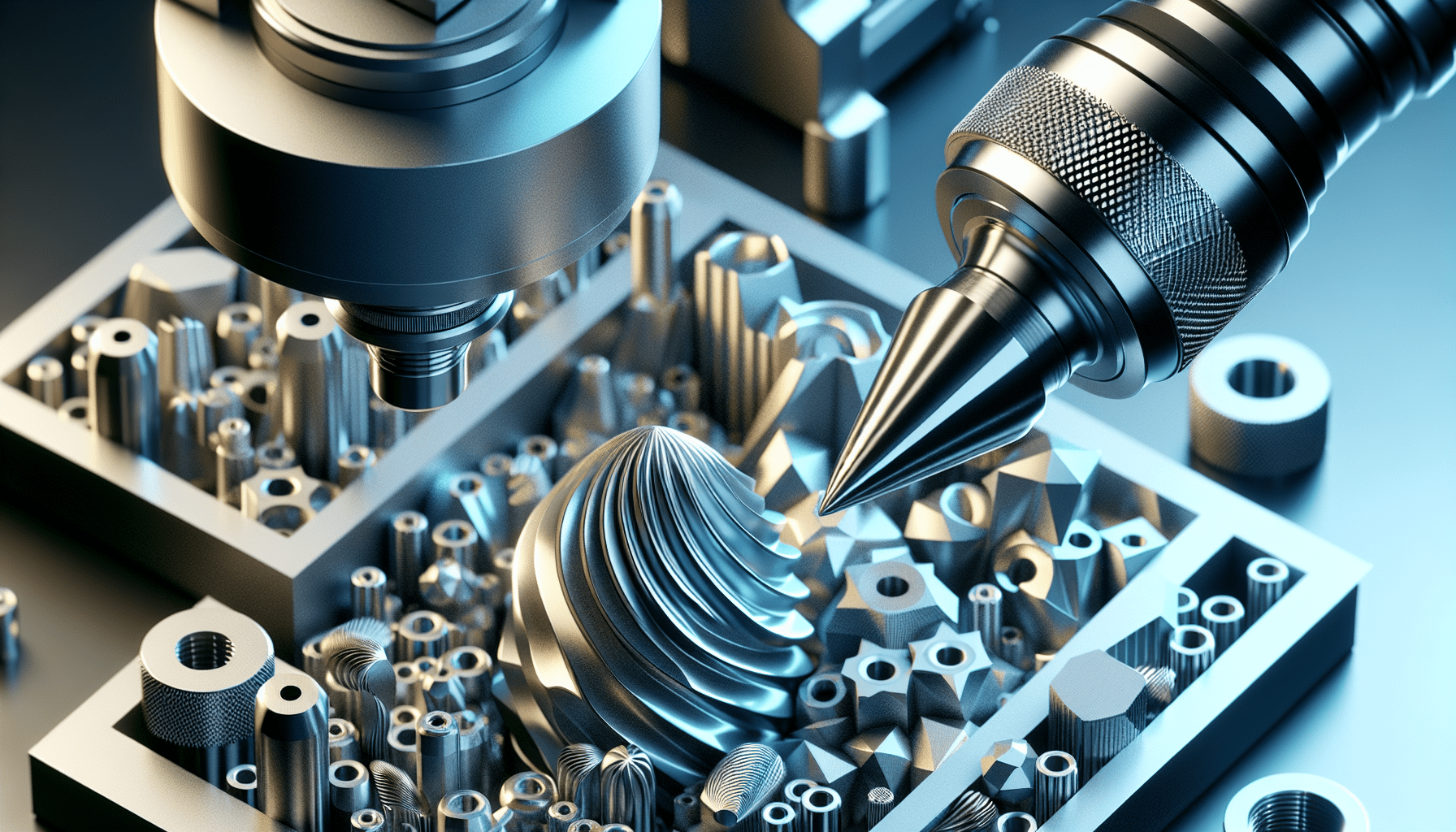ANYCUBIC 10K Resin 3D Printer, Photon Mono 4 LCD 3D Printer with 7-inch Mono Screen, Upgraded LighTurbo Matrix and Printing Platform, Printing Size of 6.04''x3.42''x6.49''
$159.99 (as of June 21, 2025 23:57 GMT +00:00 - More infoProduct prices and availability are accurate as of the date/time indicated and are subject to change. Any price and availability information displayed on [relevant Amazon Site(s), as applicable] at the time of purchase will apply to the purchase of this product.)Imagine having the capability to 3D print high-performance materials like PEEK and ULTEM directly in space. That’s precisely what Project IMPERIAL, devised by a European Space Agency consortium, aims to achieve. This groundbreaking project employs a high-temperature FDM printer designed for the International Space Station, featuring a unique conveyor belt bed that can theoretically print parts of unlimited length.
The remarkable abilities of this printer were showcased at a workshop where it produced a 1.5-meter-long bar, a challenging feat for PEEK and ULTEM filaments. Project IMPERIAL’s success will pave the way for enhanced in-space manufacturing, offering a sustainable solution for on-demand fabrication and maintenance on the ISS. The collaborative effort includes aerospace firms from Germany, the Republic of Ireland, and Portugal, all contributing to what could be a revolutionary step in space exploration and technology.
$30 off $400+ Anycubic Products with code AC30OFF
Project IMPERIAL Overview
Background of Project IMPERIAL
Welcome to the exciting world of Project IMPERIAL! Imagine a future where 3D printing technology isn’t limited by gravity. Project IMPERIAL is here to make that future a reality. Spearheaded by an innovative consortium under the European Space Agency (ESA), this project aims to revolutionize the way we think about manufacturing in space. By designing a high-temperature FDM printer, Project IMPERIAL is set to take high-performance polymer printing, such as PEEK and ULTEM, to literally new heights—specifically to the International Space Station (ISS).
Consortium Under European Space Agency
The engine driving Project IMPERIAL is a powerhouse consortium of brilliant minds and cutting-edge organizations. Aerospace firms OHB and Azimut Space from Germany, Ireland’s Athlone Institute of Technology, and Portuguese 3D printer provider BEEVERYCREATIVE have teamed up to tackle the unique challenges of space manufacturing. Each member brings invaluable expertise and resources to the table, ensuring the project stays on the cutting-edge of technology and innovation.
Key Goals and Objectives
The primary goal of Project IMPERIAL is clear: to develop a 3D printer capable of functioning seamlessly in the microgravity conditions of space while producing high-quality parts. This involves several specific objectives, such as creating a printer that can handle high-performance engineering polymers, printing parts of unlimited lengths, and operating with minimal power consumption. All this aims to make the ISS more self-sufficient by enabling on-demand fabrication and reducing reliance on Earth for supplies.
The Need for High-Performance Polymers in Space
Importance of Materials Like PEEK
In the context of space missions, the value of high-performance polymers like PEEK cannot be overstated. These materials offer exceptional strength-to-weight ratios, resistance to radiation, and durability under extreme temperature variances. Utilizing PEEK in space-related projects means astronauts can rely on equipment and components that won’t easily degrade, ensuring long-term mission success and safety.
Challenges of Manufacturing in Microgravity
Manufacturing in the microgravity conditions of space presents unique challenges. Traditional 3D printing processes are designed to work under Earth’s gravity, which helps materials settle and adhere properly as they are printed layer by layer. Without gravity, achieving the same precision and consistency can be tricky. That’s where the ingenuity of Project IMPERIAL’s design team comes into play, tackling these issues head-on to create a seamless microgravity manufacturing process.
Benefits of On-Demand Fabrication
What if you could manufacture a spare part exactly when you needed it, without waiting for a supply shipment from Earth? That’s the dream of on-demand fabrication, and with Project IMPERIAL’s 3D printer, this dream is within reach. This capability dramatically reduces downtime and logistical constraints, enhancing the operational efficiency and sustainability of space missions. Imagine fixing an urgent component failure in just a few hours instead of days or weeks!

Buy Photon Mono M5 Get Free 1KG Resin
Technical Innovations in Project IMPERIAL
High Temp FDM Printer Design
The heart of Project IMPERIAL’s innovative approach is its high-temperature FDM printer, specifically engineered for space conditions. Capable of handling engineering filaments like PEEK and ULTEM, this printer is designed to operate at the high temperatures required for these materials. This capability is critical for applications where reliability and high performance are non-negotiable, such as in aerospace and space exploration.
Use of Conveyor Belt Bed for Unlimited Length Printing
One of the standout features of the 3D printer developed under Project IMPERIAL is its conveyor belt bed. This clever design allows for printing objects of virtually unlimited length in one direction—quite the game-changer! This overcomes a significant limitation of traditional 3D printers, which are confined by the dimensions of their printing beds. This feature makes it possible to fabricate long, continuous parts that would otherwise be impossible to create in one piece.
Compatibility with High-Temp Engineering Filaments
Project IMPERIAL’s FDM printer doesn’t just stop at PEEK and ULTEM. It is designed with versatility in mind, offering compatibility with a wide range of high-temp engineering filaments. This flexibility allows for numerous applications, from creating robust mechanical components to specialized, radiation-resistant parts. The printer’s ability to handle various materials means it can adapt to multiple needs as they arise during space missions.
Demonstrations and Capabilities
Advanced Manufacturing Workshop
To showcase its cutting-edge capabilities, Project IMPERIAL was demonstrated at the Advanced Manufacturing Workshop. Here, experts and enthusiasts alike had the chance to witness firsthand the revolutionary potential of this technology. Attendees watched in awe as the printer fabricated complex parts with remarkable precision, underscoring its potential to redefine manufacturing both on Earth and in space.
Case Study: Fabrication of a 1.5m Long Bar
Imagine watching a 1.5-meter long bar being printed right before your eyes! That’s what happened at the workshop, where the team successfully demonstrated the printer’s ability to create a PEEK bar of substantial length. This is no small feat; printing such a long object without compromising the material’s integrity and strength is a testament to the meticulous design and engineering behind Project IMPERIAL.
Overcoming Build Volume Limitations
Traditional 3D printers are limited by the size of their build volumes. Project IMPERIAL breaks this barrier with its conveyor belt bed design, enabling the production of parts longer than the printer itself. This innovation is particularly beneficial for space missions, where long components might be needed for repairs or new constructions. Overcoming these build volume limitations significantly broadens the scope of what can be manufactured on-demand in space.

Consortium and Collaborators
Involvement of Aerospace Firms OHB and Azimut Space
OHB and Azimut Space, both renowned aerospace firms from Germany, play crucial roles in Project IMPERIAL. They bring decades of experience and technical expertise in space missions, ensuring the project adheres to the highest standards of aerospace engineering. Their input ensures the printer’s design and functionality meet the rigorous demands of space operations.
Role of Athlone Institute of Technology
The Athlone Institute of Technology in Ireland is another key player in this ambitious project. Their extensive research capabilities and cutting-edge technological insights have been invaluable in overcoming the technical challenges of 3D printing in microgravity. Their role further solidifies the academic rigor and innovative spirit driving Project IMPERIAL forward.
Contribution by BEEVERYCREATIVE
BEEVERYCREATIVE, the Portuguese 3D printer provider, brings hands-on manufacturing expertise to the table. Known for their high-quality 3D printing solutions, their collaboration ensures that Project IMPERIAL benefits from the latest advancements in printer design and functionality. Together, these collaborators make a formidable team, pushing the boundaries of what’s possible in space manufacturing.
Technical Requirements and Challenges
Printing High-Performance Polymers in Microgravity
Printing high-performance polymers like PEEK in microgravity conditions is no easy task. The absence of gravity affects how materials settle and fuse, requiring intricate adjustments to the printing process. Ensuring that these materials can be printed with the same precision and quality in space as on Earth is a primary technical challenge for Project IMPERIAL.
Achieving Earth-Like Part Quality
One of the project’s key requirements is maintaining Earth-like part quality. This means that the parts produced in space must meet the same standards of strength, durability, and precision as those made on Earth. Achieving this involves fine-tuning the printer’s settings and adapting its operation to account for microgravity. The result is high-quality parts that perform reliably in the harsh conditions of space.
Power Consumption Constraints
In space, every watt of power counts. The ISS and other spacecraft have limited power resources, so Project IMPERIAL’s printer must operate efficiently. Balancing high-performance printing with low power consumption is a significant technical challenge. The design team has worked tirelessly to optimize the printer’s efficiency, ensuring it can produce excellent results without draining precious power resources.

Material Efficiency and Waste Minimization
Efficient Use of Raw Materials
In the confined and resource-limited environment of space, efficient use of raw materials is crucial. Project IMPERIAL focuses on minimizing waste during the printing process, ensuring that every bit of material is used effectively. This efficiency not only saves resources but also reduces the need for resupply missions from Earth, enhancing the sustainability of long-term space missions.
Minimization of Waste
Beyond efficient use, minimizing waste generation is a core focus of Project IMPERIAL. Waste materials pose challenges for disposal and recycling, particularly in the closed environment of space stations. The printer is designed to generate as little waste as possible, and whatever waste is created can be easily managed or repurposed, contributing to the overall sustainability of the mission.
Reusable Material Solutions
Embracing a circular economy mindset, the printer also incorporates solutions for reusing materials. Off-cuts and failed prints can be recycled and used again, ensuring that nothing goes to waste. This emphasis on reusability reduces the dependency on constant resupply missions and aligns perfectly with the sustainability goals of space exploration.
Pre- and Post-Processing Considerations
Eliminating the Need for Post-Processing
One of the significant advantages of Project IMPERIAL’s printer is its ability to produce ready-to-use parts straight out of the build chamber. Unlike many traditional 3D printed components that require further finishing, these parts are complete as soon as they are printed. This feature is particularly valuable in space, where resources for post-processing tasks are limited.
Ready-to-Use Parts out of the Build Chamber
Imagine printing a complex part and using it immediately without additional steps. Project IMPERIAL promises just that. The printer ensures high precision and quality, allowing astronauts to deploy components immediately. This capability not only saves time and effort but also enhances the operational efficiency of space missions.
Comparison with Other Space-Ready Additive Manufacturing Systems
Project MELT: A Predecessor
Project IMPERIAL builds on the success of its predecessor, Project MELT. MELT was a proof-of-concept industrial FDM printer capable of operating under microgravity conditions. It set the stage by demonstrating the feasibility of 3D printing in space. Project IMPERIAL takes this foundation to the next level, offering more advanced capabilities and addressing the limitations identified in the MELT project.
COSM Advanced Manufacturing Systems’ Metal EBM Printer
While Project IMPERIAL focuses on high-performance polymers, other projects like COSM Advanced Manufacturing Systems’ Metal EBM (Electron Beam Melting) Printer are advancing metal additive manufacturing for space. Designed for NASA’s Artemis program, this printer aims to enable in-space automated manufacturing and component repair. Together, these initiatives represent the broader frontier of space-ready additive manufacturing systems.
Technological Advances in the Field
The field of space-ready additive manufacturing is rapidly evolving. From high-temp FDM printers to advanced metal EBM systems, technological innovations are pushing the boundaries of what’s possible. Project IMPERIAL is at the forefront of this revolution, enhancing the toolkit available for long-term space exploration and setting new standards for in-space manufacturing.
Conclusion
Summary of Key Achievements
Project IMPERIAL stands as a testament to the power of collaborative innovation. By overcoming the limitations of traditional 3D printing, it has opened up new possibilities for manufacturing in space. Its high-temperature FDM printer, capable of handling polymers like PEEK and ULTEM, provides a reliable and efficient solution for on-demand fabrication in microgravity conditions.
Future Directions and Goals
Looking ahead, the ultimate goal is to deploy Project IMPERIAL’s printer on the ISS, where it will enable astronauts to manufacture parts as needed. This capability will significantly enhance the station’s self-sufficiency and operational efficiency. As technology continues to advance, further improvements and new functionalities are expected, broadening the scope of 3D printing applications in space.
Impact on Space Exploration and Technology
The impact of Project IMPERIAL on space exploration is profound. By enabling on-demand fabrication, it reduces dependency on Earth-based supplies, fosters innovation, and supports the sustainability of long-term missions. This project not only advances 3D printing technology but also paves the way for a new era of space exploration, where manufacturing capabilities are as boundless as the cosmos.
Thank you for joining us on this fascinating journey through Project IMPERIAL. Stay tuned for more updates as we continue to push the boundaries of what’s possible in the final frontier. Happy exploring!
$30 off $400+ Anycubic Products with code AC30OFF







